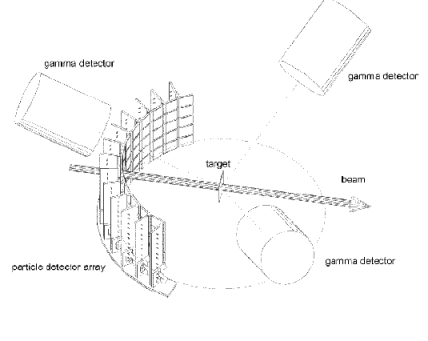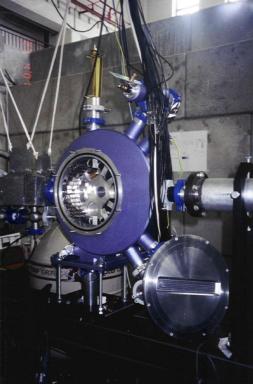CUDAC
The CUDAC chamber is equipped with 32 PIN-diodes (1 x 1cm), placed at backward angles, which correspond to the strongest excitation of the investigated nucleus.
To detect the deexcitation γ-radiation in Coulex studies three HPGe detectors were used, working in coincidence with PIN-diodes.
 |
 |
| Fig. 1, left: Schematic view of the CUDAC set-up. | right: The CUDAC chamber open to show the silicon detectors inside. |
CUDAC has proven to be an excellent tool to study the properties of well deformed nuclei, such as 165Ho. However, for the less deformed ones, such as Mo isotopes, the gamma detection efficiency was too low and therefore we decided to use a more compact Coulex scattering chamber with a multi-detector germanium array OSIRIS-II.
Nowadays CUDAC is used for experiments other than Coulomb excitation, mostly fusion barrier studies.
The data collected using the CUDAC setup were a basis for 3 PhD theses (two on Coulomb excitation: J. Iwanicki (2002), M. Zielińska (2006) and one on fusion barrier distributions: Ł. Świderski (2005)) as well as for several MSc theses.

